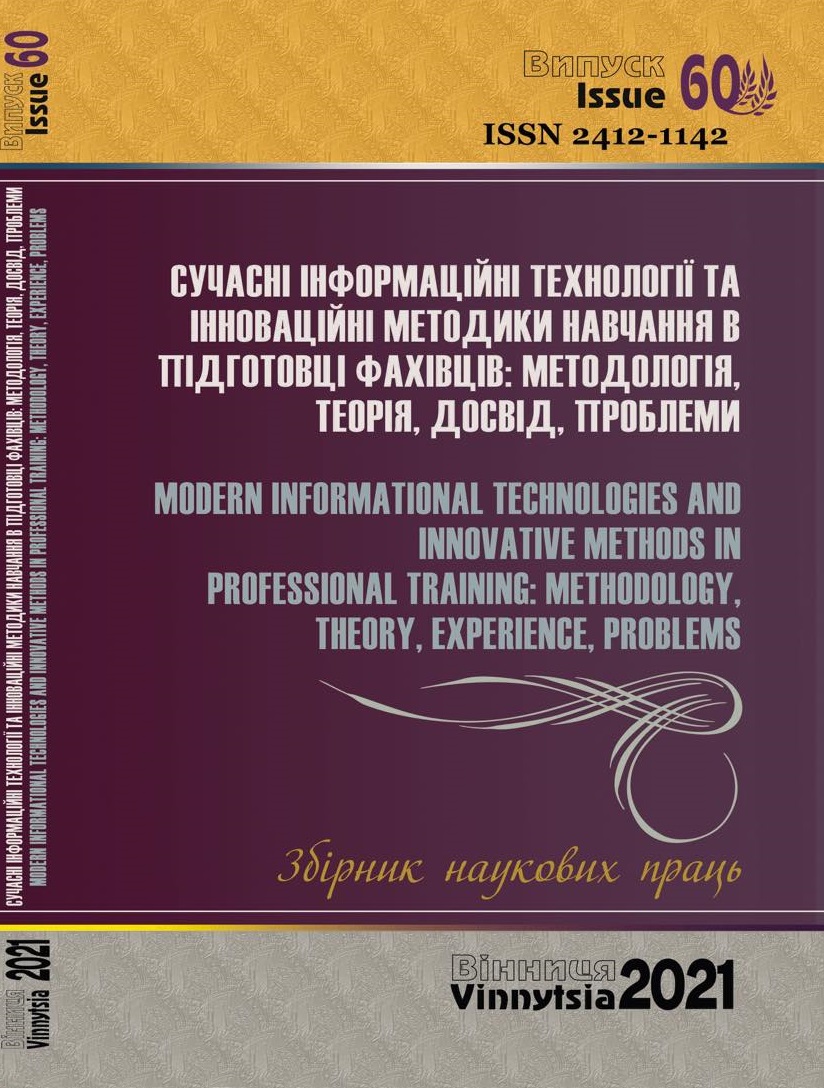CONSTRUCTION MODELING STEREOMETRIC PROBLEMS WITH CROSS-SECTIONS
DOI:
https://doi.org/10.31652/2412-1142-2021-60-272-281Keywords:
stereometry; geometrization and constructivism of tasks; graphic and graphic- analytical methodsAbstract
Today, in the senior classes of I of GSE, in geometry lessons, they solve mainly
problems of a computational nature, without their high-quality accompaniment with a drawing.
But drawing is the main tool in geometry. A similar approach to teaching the first of the sciences
has led to the fact that students of pedagogical universities have little command of problem
solving skills, do not know practical (applied) geometry, and do not know how to properly operate
with spatial figures. Within the framework of this article, we propose to radically change the
approach to teaching and learning, first of all, for future mathematics teachers, by increasing the
drawing loads by geometrizing ordinary computing problems, significantly adding constructivism
by formulating their conditions with an emphasis on practicality. Only one type of problems has
been demonstrated - with sections of spatial bodies by a plane, which can be solved not only
computationally, but also by constructions, in particular graphically (or graphically analytically),
obtaining results of practical meaning through the visualization of step-by-step algorithms in
finding distances, angles, areas of plane figures, etc., that is, working on a picture plane (notebook,
blackboard, computer or any other multimedia tool). It is not recommended to reject the
computational version of the solution of the problem, but using the graphic-analytical method, to
use certain results of calculations in order to optimize the drawing operations. Five basic methods
of specifying a plane in space are presented, which are substantiated by logical considerations in
stereometry textbooks for I of GSE. The fact is that students (learners) do not have a very good
command of the questions of possible ways of specifying a plane in the conditions of
computational problems, do not have the proper skills to redefine a secant plane, to reduce it to
one of the possible basic ways, and, finally, do not understand that without such a redefinition it
is impossible to solve the problem. Revealed the applied side of the discipline «Geometry»,
because the planar sections, deployment of surfaces are widely used in various industries.
Downloads
References
Погорєлов О. В. Геометрія: Стереометрія: підручник для 10-11 класів середньої школи. 4-те вид. К.: Освіта,
128 с.
Ленчук І. Г. Конструктивна стереометрія в задачах: навч. посіб. для студ. математ. спец. ВПНЗ. Житомир:
вид-во ЖДУ ім. І Франка, 2010. 367 с.
Ленчук И. Г., Павлов А. В. Об одном аналитическом методе построения развёрток не развёртываемых
поверхностей вращения 2-го порядка. Прикладная геометрия и инженерная графика. К.: «Будівельник»,
Вып. 26. С. 7-10.
В. Г. Кремень, & В. В. Ільїн, (2020). «Презентація візуальної грамотності в освітньому процесі та її
експлуатація в культурі мислення». Інформаційні технології і засоби навчання, 75(1), 1-12. Електронний
ресурс.. Доступно: https://doi.org/10.33407/itlt.v75i1.3660.
Сборник задач по математике для поступающих во втузы: учеб. пособие. В. К. Егерев и др.; под ред.
М. И. Сканави. – 5-е изд., перераб. и доп. М.: Высшая школа, 1988. 431 с.
Downloads
Published
Issue
Section
License
Copyright (c) 2021 Іван Ленчук

This work is licensed under a Creative Commons Attribution 4.0 International License.

